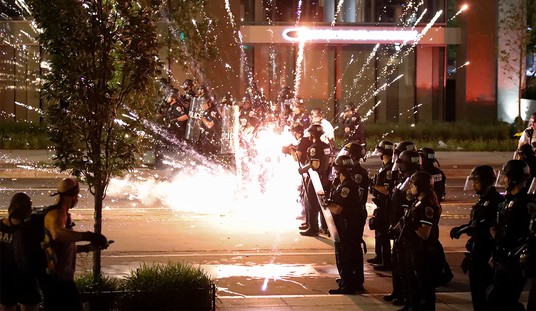Given all the other pots boiling over on the national stove at the moment, this may seem like small potatoes, but President Trump’s decision to scale back two vast “national moments” put in place by his predecessor is actually, as Joe Biden might say, a pretty big ******* deal. The Bears Ears monument is being trimmed by more than a million acres and Grand Staircase-Escalante will be cut by 800,000. This is a victory for western landowners, particularly ranchers and outdoor sports enthusiasts, but also a win for advocates of state’s rights. As expected, however, many in the more liberal halls of the media didn’t see it as particularly good news. (Washington Post)
President Trump announced Monday that he is drastically scaling back two national monuments established in Utah by his Democratic predecessors, the largest reduction of public lands protection in U.S. history.
Trump’s move to shrink the Bears Ears and Grand Staircase-Escalante national monuments by more than 1.1 million acres and more than 800,000 acres, respectively, immediately sparked an outpouring of praise from conservative lawmakers as well as activists’ protests outside the White House and in Utah. It also plunges the Trump administration into uncharted legal territory since no president has sought to modify monuments established under the 1906 Antiquities Act in more than half a century.
His decision removes about 85 percent of the designation of Bears Ears and nearly 46 percent of that for Grand Staircase-Escalante, land that potentially could now be leased for energy exploration or opened for specific activities such as motorized vehicle use.
There were the usual rounds of protests and threats of immediate lawsuits, but Trump defended his actions, saying, “past presidential administrations had “severely abused” the purpose and spirt of a federal law that allows them to protect public lands by turning them into national monuments.”
There’s essentially nothing this President can do without immediately facing demonstrations and lawsuits, but in this case, his reasoning is extremely hard to argue. Even though it’s been discussed here before, this entire debate as nothing to do with Trump and everything to do with the 1906 Antiquities Act. Both supporters and opponents of Trump’s action here are calling for revisions to the law, but it’s difficult to see what either of them would want to change. Let’s go back to the key wording in the act, specifically section 2. (Emphasis added, so please at least refer to those bits)
That the President of the United States is hereby authorized, in his discretion, to declare by public proclamation historic landmarks, historic and prehistoric structures, and other objects of historic or scientific interest that are situated upon the lands owned or controlled by the Government of the United States to be national monuments, and may reserve as a part thereof parcels of land, the limits of which in all cases shall be confined to the smallest area compatible with proper care and management of the objects to be protected: Provided, That when such objects are situated upon a tract covered by a bona fied unperfected claim or held in private ownership, the tract, or so much thereof as may be necessary for the proper care and management of the object, may be relinquished to the Government, and the Secretary of the Interior is hereby authorized to accept the relinquishment of such tracts in behalf of the Government of the United States.
Sometimes the language used by our elected officials in days long past can be confusing, particularly as the American usage of English continues to morph. But in this instance, you really have to be doing some linguistic gymnastics to read that as anything other than what it obviously is. “Monuments” were intended to be very different from the vast tracts of land which make up National Parks. The legislation refers repeatedly to “objects,” as in specific structures and features. Historic buildings or battlefields are the most common examples which come to mind. But even if you choose to be willfully blind to that obvious connotation, the authors went out of their way to insist that the preserved parcels of land be confined to the smallest area compatible with proper care and management of the objects.
Bears Ears was created on more than 2,100 square miles of land. That’s more than half the size of Rhode Island. If you want to preserve that huge swath of territory you can talk about making it a National Park. That way Congress has oversight over the decision. It was never “a monument” or “an object” to begin with.
The 1906 Antiquities Act is not in need of any fresh revisions. It says precisely what its authors intended it to say. For chunks of land the size of Bears Ears we already have a mechanism for creating National Parks. What President Trump did was restore the clear intent of the law in question, not “re-write” it as some of his opponents are trying to claim.








Join the conversation as a VIP Member